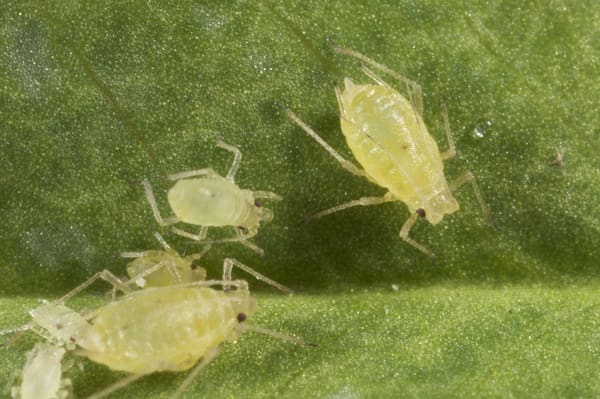FOR the first time, Australian researchers have found evidence of green peach aphid (GPA) evolving resistance to sulfoxaflor, the active ingredient in the pesticide, Transform.
 GPA is a widespread pest of canola and pulse crops and is a key vector of turnip yellows virus (TuV) (formerly known as beet western yellows virus), which decimated crops in parts of south-eastern Australia in 2014.
GPA is a widespread pest of canola and pulse crops and is a key vector of turnip yellows virus (TuV) (formerly known as beet western yellows virus), which decimated crops in parts of south-eastern Australia in 2014.
Sulfoxaflor, a group 4C insecticide, is an important tool in GPA management in canola, particularly since effective chemistries are limited.
In Australia, GPA is already known to have resistance to synthetic pyrethroids, carbamates, organophosphates and neonicotinoids.
Now, low-level resistance to sulfoxaflor has been detected in a small number of GPA populations collected near Esperance, in Western Australia.
The discovery was made through collaborative research work by cesar, CSIRO, and the Department of Primary Industries and Regional Development (DPIRD), and was led by Paul Umina, director of cesar–a Melbourne-based scientific research organisation.
The research was the result of a co-investment by the Grains Research and Development Corporation (GRDC) and Corteva Agriscience.
Although further investigation is required, the mechanism conferring this resistance is likely due to metabolic resistance, whereby the aphids detoxify sulfoxaflor quicker than susceptible individuals.
According to Dr Umina, the level of sulfoxaflor resistance detected in WA is low, and importantly, the resistant populations have all tested negative to the R81T mutation known to confer target site resistance.
“While Transform remains a highly effective means to control GPA in other parts of Australia, this discovery serves as an important reminder to use the product judiciously,” he said.
For a species like GPA, which has a high propensity to evolve new resistance, this means only spraying insecticides when absolutely needed.
 There are unlikely to be yield losses from TuV infections after the rosette stage in canola.
There are unlikely to be yield losses from TuV infections after the rosette stage in canola.
The risk of direct feeding damage from GPA is also low in later stage canola crops, although in seasons like 2018, aphids can build up to high population levels and inflict serious damage, particularly when plants are moisture stressed.
“When insecticide applications are warranted, a key resistance management strategy for the management of GPA is to rotate chemical Mode of Action groups, although growers are limited in this approach due to levels of resistance to other registered foliar insecticides”, Dr Umina said.
“It is therefore important to take an integrated approach to GPA management.
“Green bridge control and deterring aphid landings during autumn by sowing into standing stubble are two preventative tactics that growers can use to reduce reliance on insecticide controls.”
Corteva Agriscience research scientist, Rob Annetts, agrees that IPM tools are important.
“Conserving beneficial insects early in the season through the use of soft chemistry such as Transform is critical to IPM,” Dr Annetts said.
When using Transform to control GPA, it is critical that the product is applied with optimum coverage.
Transform exhibits only acropetal movement in the plant (i.e. it moves upwards in the xylem or stem) and does not translocate downwards.
In order to control GPA populations colonising older canola leaves, applications should be made before crop canopy closure and by using appropriate spray technologies.
“It is critical that spray booms are set up to deliver the chemical where the aphids are located. High water volumes, correct nozzles selection and appropriate ground speeds help to ensure that Transform gives the expected efficacy”, Dr Annetts said.
“It is also critical that the full label rate for Transform is used, as lower rates will often prove to be ineffectual and only serve to increase selection pressure for further metabolic resistance.”
Currently, the populations of GPA demonstrating low level resistance are confined to the Esperance region of WA.
To limit the spread and restrict the further evolution of resistance it is critical that Transform is used responsibly within the framework of an Insecticide Resistance Management Strategy (IRMS).
Following label directions and ensuring excellent coverage are critical to ensure best results.
Growers are encouraged to follow recommendations outlined in the GPA IRMS, which has been developed by the National Insecticide Resistance Management working group to assist growers in their efforts to control GPA and address insecticide resistance.
Although some updates to this strategy are now needed, it remains the best source of information for growers.
The document can be found on the GRDC website at www.grdc.com.au/GPAResistanceStrategy.
Sources: GRDC, Corteva Agriscience

HAVE YOUR SAY